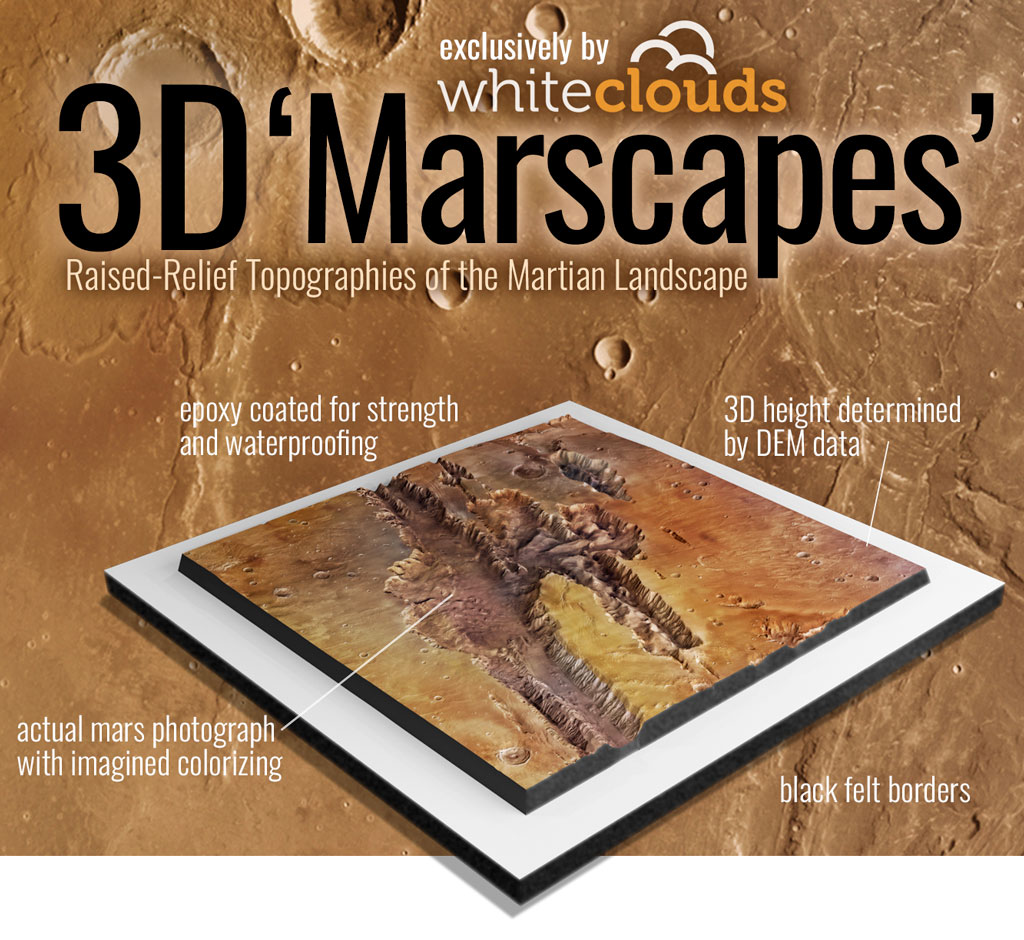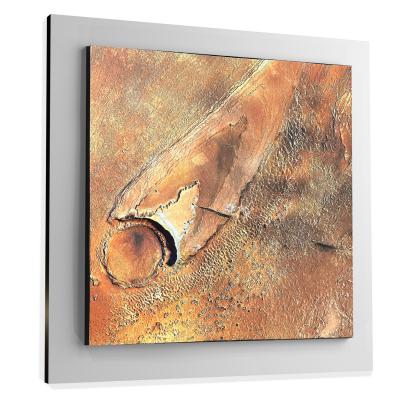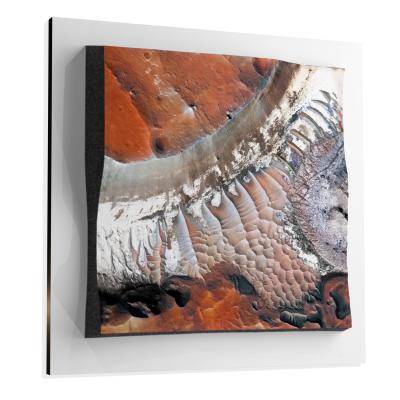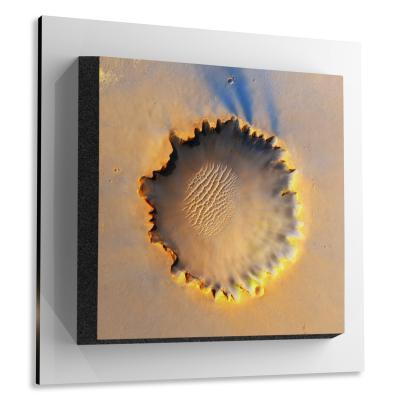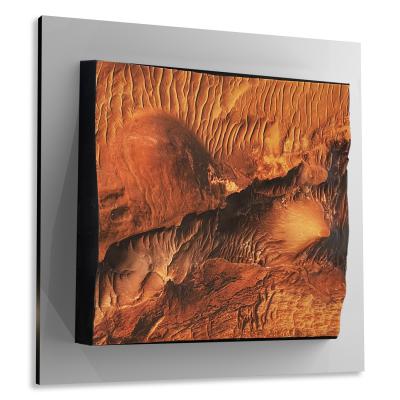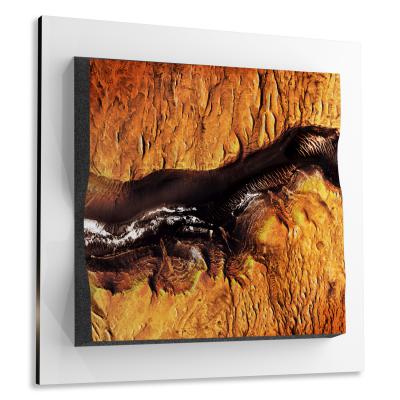Elorza Crater
Elorza Crater
We Build Custom 8K Mars Canvas Prints of Elorza Crater
Did you know we make
custom
8K Mars Canvas Prints

and
3D Marscapes

Elorza Crater
Elorza Crater is one of Mars’ most intriguing geological features, capturing the attention of scientists, researchers, and space enthusiasts alike. Named after a city in Venezuela, this Martian impact crater offers valuable insights into the planet’s geological and climatic history. This report aims to provide an in-depth analysis of Elorza Crater, covering its geographical location, geological composition, significant discoveries, scientific missions that have studied the feature, as well as its unique geomorphological aspects.
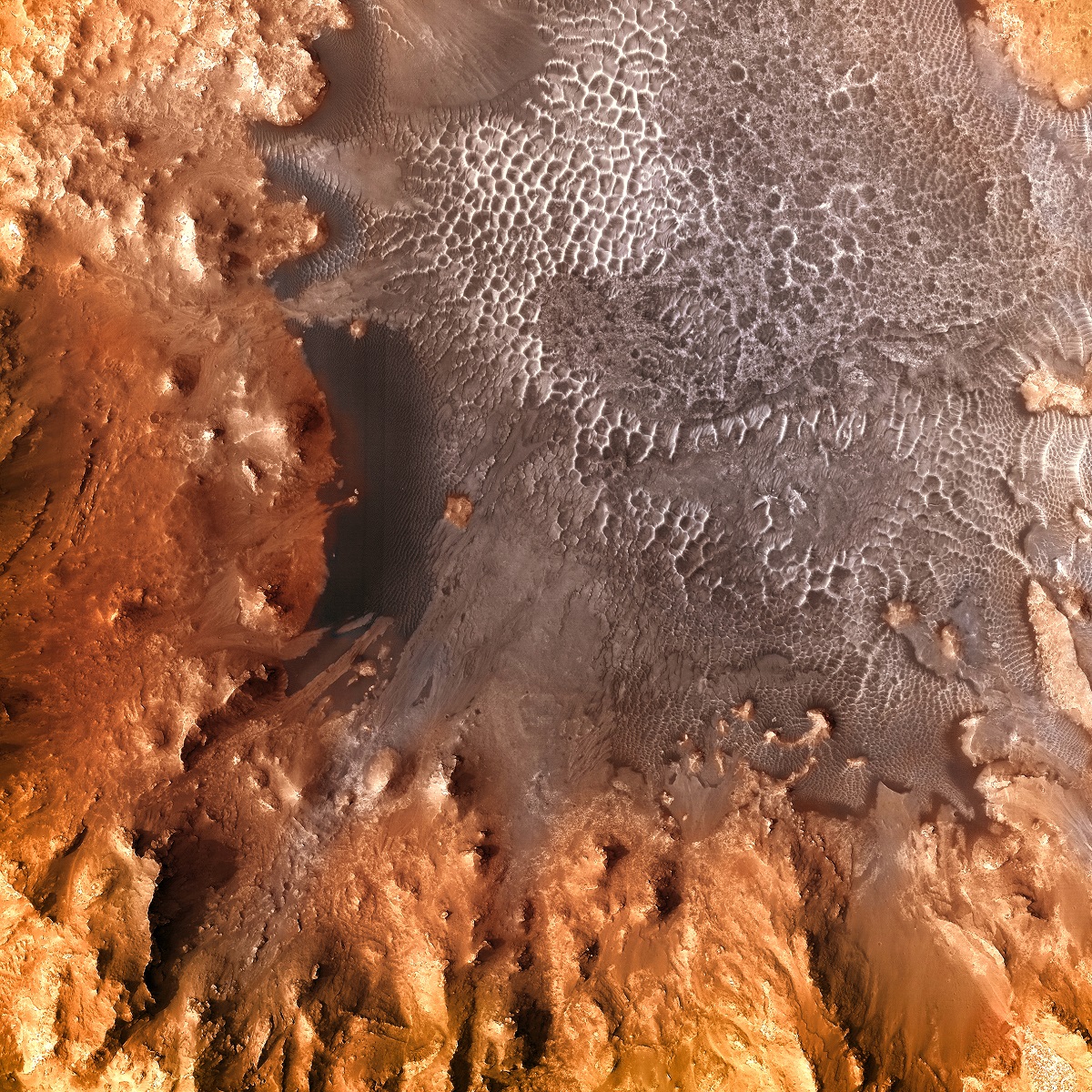 Elorza Crater
Elorza Crater
Geographical Location
Elorza Crater holds a fascinating position on Mars, situated in the Eridania quadrangle at geographical coordinates of approximately 37.8°S latitude and 215.6°E longitude. This mid-sized crater, which spans roughly 90 kilometers in diameter, isn’t just a mere hole in the ground. Its strategic location places it at the crossroads of multiple geological units. These include the heavily cratered, ancient Martian highlands to the south and younger volcanic plains to the north. This unique geographic juxtaposition makes Elorza Crater a compelling natural laboratory for investigating an array of Martian phenomena, from the planet’s geological history to its climatic variations. The crater’s geographical setting has prompted scientists to explore how tectonic shifts and impact events may have shaped its surroundings and contributed to its current state.
Advertisement
Sample Marscapes
Geological Composition
When it comes to the geological makeup, Elorza Crater is a Pandora’s box of intriguing complexities and diverse materials. Predominantly, the crater is characterized by a rich composition of impact-melt rocks and breccias—both telling signs of the crater’s violent formation through a massive impact event. But that’s just the tip of the iceberg. The crater’s floor is swathed in an intricate layer of fine-grained sedimentary deposits. These deposits are believed to have originated from both aqueous and aeolian processes, suggesting a dynamic history involving both water-based and wind-driven sedimentation. Advanced spectroscopic studies have identified a mineralogical cocktail within these formations, including sulfates, clays, and ferric minerals. These diverse mineral signatures suggest that Elorza Crater has been a stage for a myriad of geological processes, including episodes of aqueous and volcanic activity. To cap it off, evidence also suggests basaltic lava flows that have partially filled the crater, hinting at a later stage of volcanic activities that have modified its initial form.
Significant Discoveries
Evidence of Past Water Bodies
The revelations about Elorza Crater have been truly eye-opening, with perhaps the most impactful being the compelling signs of ancient aqueous activity. High-resolution images have revealed features that closely resemble what we would classify as ancient lake beds, deltas, and alluvial fans here on Earth. These features offer not just a snapshot into the Martian landscape but a lens through which we can view the planet’s entire hydrological history.
Layering and Stratification
The visible layering and stratification in the rocks, particularly observable in the steep walls of the crater, present another noteworthy finding. This stratified appearance hints at various depositional environments that the region has encountered, potentially pointing to alternating wet and dry periods. In essence, these layers may act as chapters in a geological book, recounting the planet’s history through changes in climate, water level, and even atmospheric composition over the eons.
Scientific Missions
Elorza Crater has been at the forefront of Martian research primarily via satellite missions that have carried out a range of remote sensing and spectroscopic analyses. NASA’s Mars Reconnaissance Orbiter (MRO) has been instrumental, capturing detailed imagery of the crater’s topography and geology. Meanwhile, the European Space Agency’s Mars Express has added another layer to our understanding through its own sets of high-resolution data and spectroscopic analyses. Let’s not overlook the Mars Odyssey orbiter, which has also weighed in with invaluable data, notably thermal emission information captured through its THEMIS instrument. Although no specific lander missions have been designed with Elorza Crater as the primary target, it remains high on the list of intriguing locations for future exploration, given its rich geological and climatic context.
Geomorphological Features
The geomorphological landscape of Elorza Crater is nothing short of a geological tapestry, woven together by a variety of formative processes. The structure maintains the classic features associated with impact craters, including a well-defined rim, central peak, and an ejecta blanket that surrounds the impact site. In addition to these, the floor of the crater reveals sedimentary formations that appear to be the handiwork of ancient rivers and perhaps even lakes. The vertical faces of the crater display traces of landslides, rockfalls, and slumping, suggesting a history of material movement and rearrangement. Furthermore, the complex network of what appears to be dried-up river channels and evaporated lake beds enhances the crater’s geomorphological complexity, providing additional facets to an already intricate geological narrative.
Elorza Crater serves as a valuable asset for scientists studying the Martian landscape. Its strategic location, varied geological composition, and significant scientific discoveries make it an ideal subject for future Mars missions. The data garnered from studies of Elorza Crater could yield groundbreaking insights into Mars’ geological and climatic past, contributing to the broader understanding of the Red Planet’s history and its potential to have harbored life. Given the current trajectory of Martian exploration, Elorza Crater stands as a monument to the planet’s complex and fascinating geological narrative.
Check out our 3D Mars Learning Center for more information on Mars and Elorza Crater. You can also learn more at: NASA Mars Exploration.
More About Mars
Contact us today to learn more about our 3D services and how we can help you achieve your goals.
